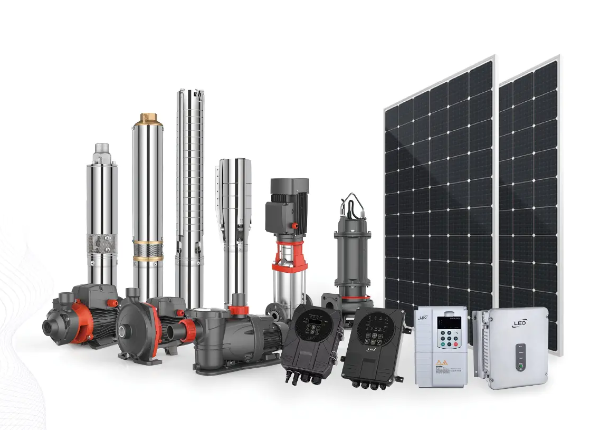What is a solar water pump and how does it work?
by
What is a solar water pump and how does it work?
Struggling with high electricity bills and unreliable power for water supply? There's a sustainable solution that harnesses free solar energy.
A solar water pump uses solar panels to convert sunlight into electricity, powering a pump that moves water from sources like wells or rivers to storage tanks or irrigation systems without relying on grid power or fuel.
Transitioning to solar water pumping isn't just an eco-friendly choice—it's a smart financial decision that pays off over time. Let's dive deeper into how these systems can transform your water access.
What are the advantages of a solar water pump over a traditional electric water pump?
Tired of unpredictable power outages and rising electricity costs affecting your water supply?
Solar water pumps eliminate electricity bills, require minimal maintenance, and operate anywhere with sunlight, making them more cost-effective and reliable than grid-dependent electric pumps in remote areas.
Key Benefits Breakdown
| Advantage | Solar Pump | Electric Pump |
|---|---|---|
| Operating Cost | Free solar energy | Ongoing electricity bills |
| Maintenance | Minimal (no moving parts in PV panels) | Regular motor maintenance |
| Location Flexibility | Works anywhere with sunlight | Requires grid connection |
| Environmental Impact | Zero emissions | Indirect emissions from power plants |
Going solar means:
- No more fuel costs or price fluctuations
- Silent operation (no noisy generators)
- 20-25 year lifespan for solar panels
- Government incentives in many regions
What are the main components of a solar water pump system?
Ever wondered what makes these "magic" pumps work without any cords?
A complete solar water pump system consists of solar panels for power generation, a pump controller for regulation, the water pump itself (submersible or surface), and often includes storage batteries and tanks for continuous supply.
System Components Explained
-
Solar Panels: Generate DC electricity from sunlight
- Monocrystalline (15-22% efficiency)
- Polycrystalline (13 16% efficiency)
-
Pump Controller:
- Protects from voltage fluctuations
- Optimizes power delivery (MPPT technology)
- Converts DC to AC if needed
-
Water Pump Types:
- Submersible (for deep wells >50ft)
- Surface (for ponds/rivers)
- Centrifugal vs. positive displacement designs
-
Storage Components:
- Water storage tanks (500-10,000L common)
- Optional battery banks (for cloudy days)
Can a solar water pump work even when there is no sunlight?
What happens when clouds roll in or the sun sets? Does your water supply stop?
Modern solar water pumps can operate without direct sunlight using battery storage systems or hybrid configurations, while DC models paired with water storage tanks ensure continuous supply during low-light periods.
Solutions for Non-Sunny Conditions
-
Battery Backup Systems:
- Store excess solar energy during day
- Lithium-ion (5-10 year lifespan)
- Lead-acid (cheaper but shorter lifespan)
-
Hybrid Systems:
- Solar + grid/generator backup
- Automatic switching mechanisms
-
Water Storage Strategies:
- Oversized tanks (2-3 days supply)
- Elevated tanks for gravity feed
Efficiency Tips:
- Oversize solar array by 20-30%
- Use DC pumps for direct coupling
- Implement drip irrigation to conserve water
Conclusion
Solar water pumps offer reliable, cost-effective water access by harnessing renewable energy, with smart designs ensuring operation even during cloudy periods.
Popular Posts
You may also be interested in:




